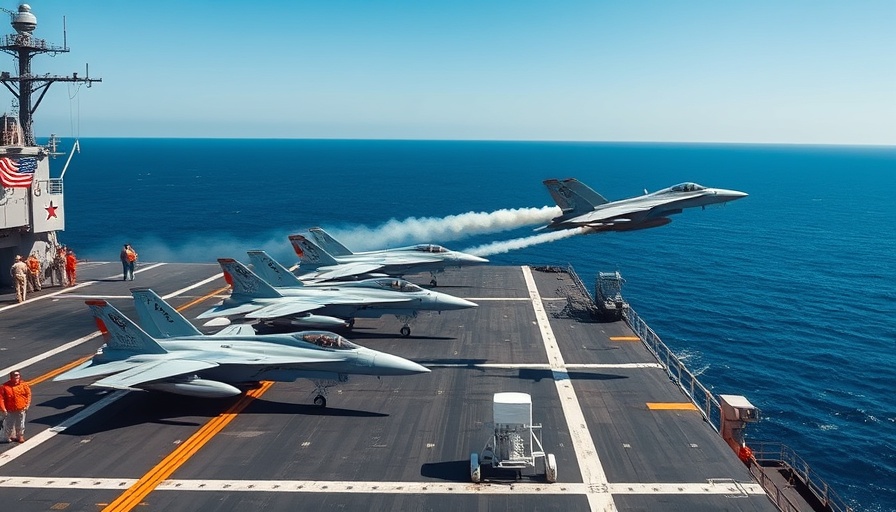
The Strategic Shift: Understanding the U.S. Military Movement in the Middle East
The past few weeks have witnessed a fascinating realignment of U.S. military assets in the Middle East, leading many to question the strategic motivations behind such maneuvers. With tensions rising in the region, particularly concerning Iranian activities and their proxies, the Pentagon’s deployment decisions have been scrutinized, revealing layers of complexity intertwined with both geopolitical strategy and international diplomacy.
Military Assets on the Move: An Overview
The recent transfer of several military jets and ships to the Middle East, including the MH-60S Sea Hawk helicopter and the aircraft carrier USS Carl Vinson, signifies a robust U.S. military presence aimed at deterring potential threats from adversaries, primarily Iran. As of April 2025, these movements are not only about deterrence but also about providing support to allies in the region, including Israel and Gulf states.
The Role of Regional Allies in Shaping U.S. Strategy
Understanding U.S. military maneuvers in the Middle East also requires examining the relationships with regional allies. Israel's defense strategies heavily rely on U.S. support, particularly against perceived Iranian aggression. The shifting U.S. military presence can be seen as a reinforcement of these alliances, demonstrating American commitment to maintaining stability and countering influence from adversarial states.
Counterarguments: Diverse Perspectives on Military Presence
While many see the increased U.S. military presence as a protective measure, some argue that such actions could escalate tensions further. Critics of military deployments often suggest that rather than fostering stability, these moves may provoke adversaries and contribute to an arms race in a region already fraught with conflict. Exploring these divergent perspectives helps paint a comprehensive picture of the potential implications.
Future Predictions: Trends to Watch in Military Strategy
As geopolitical landscapes shift, particularly influenced by developments concerning Iran's nuclear program and ongoing regional conflicts, analysts predict that U.S. military strategies will adapt accordingly. Future deployments may increasingly focus on joint operations with allies and technological advancements in military operations. Observing these trends will be crucial for understanding America's long-term strategic posture in the region.
Engaging with Trending News: Implications for Public Awareness
As these significant military shifts unfold, they quickly become trending news both in the U.S. and globally. Engaging with this information allows citizens to participate in important discussions surrounding national security and foreign policy. Keeping informed helps in understanding how such military strategies impact everyday life and international relations.
Summary: What This Means for You
The recent shifts of U.S. military assets in the Middle East demonstrate a responsive strategy aimed at tackling both immediate and long-term challenges in the region. For the general public, understanding these military tactics provides insight into broader issues impacting global security, U.S. diplomacy, and the delicate balance of power that defines international relations today.
Stay engaged with current trends, as this military reshuffling is likely to evolve and remain a focal point in international discussions. The implications reverberate through not only political spheres but also in the socio-cultural fabric, inspiring deeper public interest in military and foreign affairs. Consider following discussions on trending news outlets and platforms to remain abreast of how military strategies unfold and the effects they carry.
 Add Row
Add Row  Add
Add 




Write A Comment